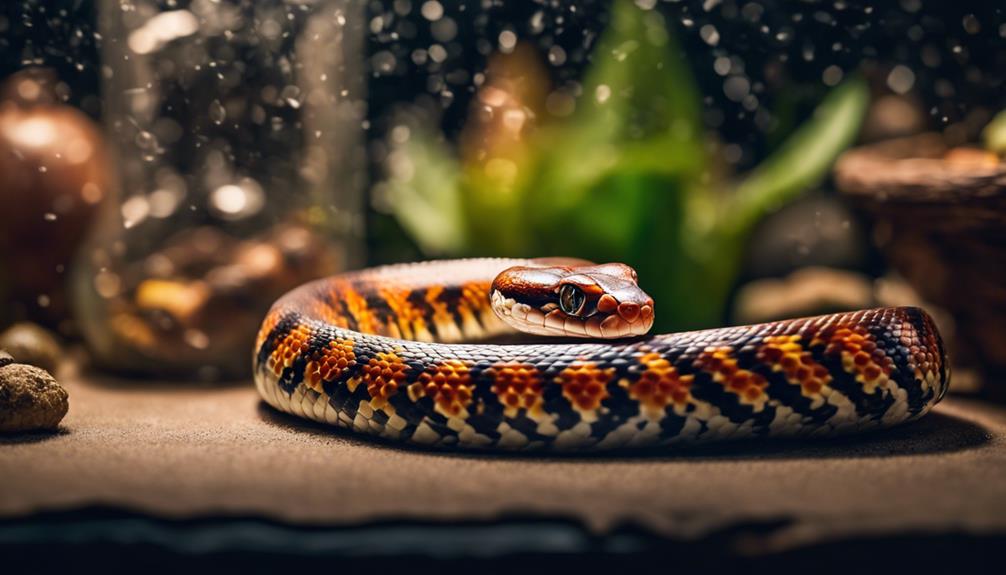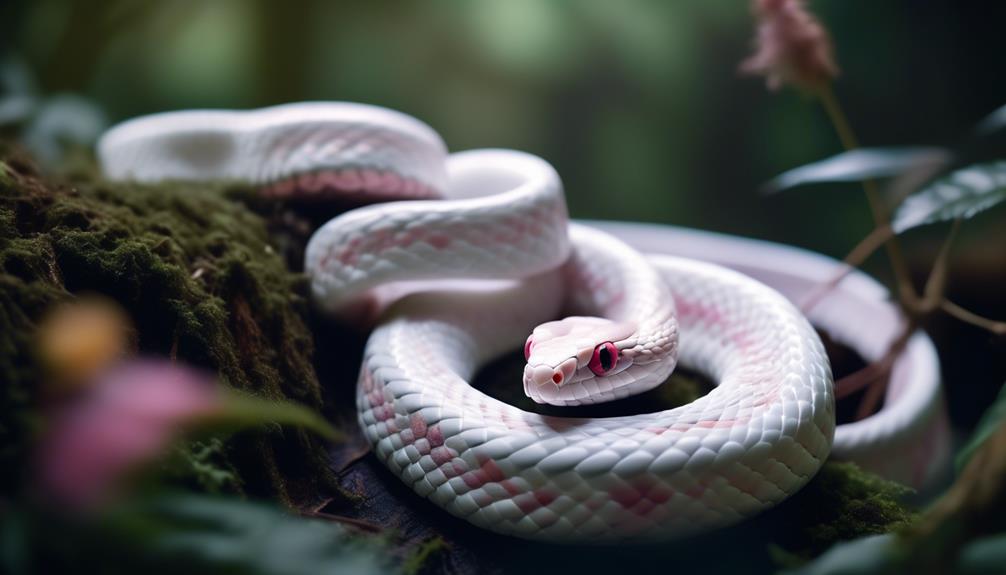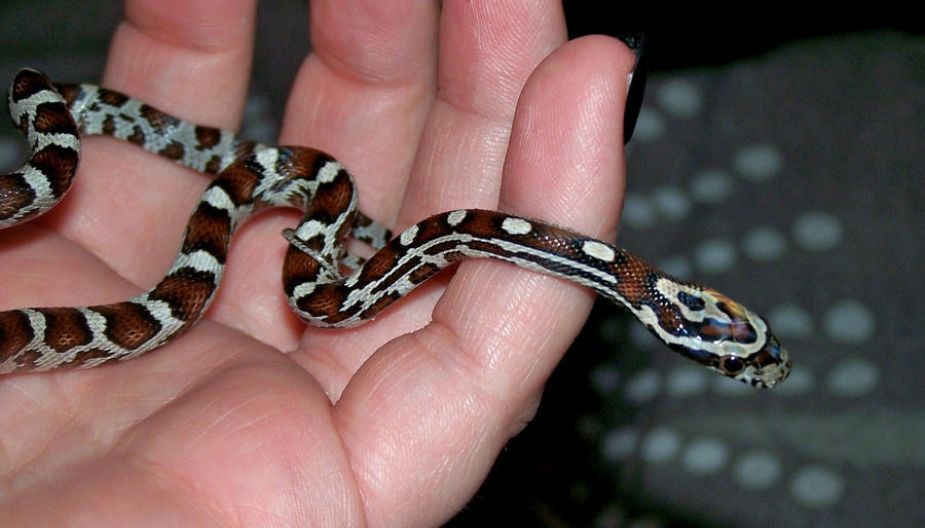Consider the scenario of walking on a tightrope, delicately balancing between sustenance and survival for a long duration. This scenario aptly describes a corn snake’s capacity to withstand periods without food – a truly remarkable aspect of their biology.
However, this is not the only intriguing facet. Comprehending the parameters of a corn snake’s ability to fast can provide valuable insights into their care and well-being.
Key Takeaways
- Regular feeding schedules are vital for corn snakes at different life stages to ensure proper nutrition and growth.
- Adult corn snakes can withstand 2-3 months without food, but extended fasting poses health risks like organ failure.
- Prolonged feeding refusal can lead to severe consequences such as muscle breakdown, organ failure, and heart issues.
- Monitoring feeding habits and recognizing signs of starvation promptly is crucial to prevent dire health complications in corn snakes.
Factors Affecting Corn Snake Feeding Schedule
How do external factors influence the feeding schedule of a corn snake?
When considering the feeding regimen of your pet corn snake, it’s essential to account for various factors that can impact their nutritional needs.
For baby corn snakes, aged in weeks, a frequent feeding schedule is imperative, typically every 5-7 days, as they’re in a critical growth phase.
As they progress into young corn snakes, around 1-2 years old, they still require consistent feeding every 7 days to support their development adequately.
Pre-adult corn snakes, between 2-4 years old, can be fed every 7-10 days to maintain their health and vigor.
Adult corn snakes, aged 4 years and older, have a more extended feeding interval of 10-14 days to meet their nutritional requirements.
These timelines guarantee that your snake receives the necessary sustenance for their stage in life and contributes to their overall well-being and longevity.
Safe Duration Without Feeding
Adult corn snakes possess the ability to safely endure 2-3 months without consuming food, thanks to their slow metabolism and digestive system. During this time, they rely on their fat reserves as an energy source to survive without eating.
However, extended fasting beyond this 2-3 month window can be important for adult corn snakes. Prolonged fasting can lead to the depletion of fat stores, resulting in the breakdown of muscle and organs, potentially leading to organ failure and other health issues.
Regular feeding schedules are essential for adult corn snakes to prevent such extended fasting periods that could endanger their health due to their slow metabolism. It’s vital to monitor their feeding habits closely to make sure they receive adequate nutrition and avoid the risks associated with prolonged fasting.
Newborn Corn Snake Feeding Timeline
When considering the feeding timeline for newborn corn snakes, it’s important to guarantee regular feeding every 5-7 days to support their proper growth and development. Ensuring a consistent feeding schedule for baby corn snakes is vital to establishing healthy eating habits early on.
Here are some key points to keep in mind:
- Nutritional Needs: Feeding newborn corn snakes every 5-7 days is essential to meet their nutritional requirements for growth and development.
- Growth Monitoring: Regular feeding not only supports proper growth but also allows for the monitoring of the baby corn snake’s development over time.
- Health Monitoring: By adhering to a feeding frequency of every 5-7 days, you can promote the health and well-being of your newborn corn snake while fostering proper growth.
Consequences of Prolonged Feeding Refusal
Prolonged refusal of food in corn snakes may result in detrimental consequences such as the breakdown of muscles and organs. When corn snakes experience prolonged fasting, their bodies start utilizing their tissue for energy reserves. This process can lead to severe issues like organ failure, muscle breakdown, and heart problems. Due to their limited body fat reserves, corn snakes are particularly vulnerable to the effects of prolonged feeding refusal.
Healthy corn snakes will begin breaking down muscles and organs when their tissue energy becomes insufficient, which can ultimately culminate in death. It’s vital to monitor your corn snake’s feeding habits closely to prevent them from entering a state of prolonged fasting, as the consequences can be dire.
If you notice any signs of prolonged fasting or deterioration in your corn snake’s condition, it’s essential to seek veterinary assistance promptly to address any potential health concerns before they escalate.
Signs of Starvation in Corn Snakes
To identify signs of starvation in corn snakes, observe their behavior for cues such as prowling and reduced soaking. Additionally, keep an eye out for lack of interest in food, weight loss, and lethargy. Here are three key signs to look for:
- Prowling Behavior: If you notice your corn snake constantly moving around its enclosure in search of food, it could be a sign of starvation. Prowling behavior may indicate heightened hunger or distress.
- Reduced Soaking: Corn snakes typically enjoy soaking in water to aid in shedding and hydration. A decrease in soaking behavior might suggest that the snake is conserving energy due to a lack of food intake.
- Dehydration and Sunken Eyes: A dehydrated snake may have sunken eyes and dry skin. These physical signs, along with lethargy, indicate that the snake isn’t receiving sufficient nourishment, which can lead to organ failure and muscle breakdown if not addressed promptly.
Frequently Asked Questions
How Long Can Corn Snakes Go Without Being Fed?
You should maintain a consistent feeding schedule for your corn snake to prevent health concerns. Weight loss, appetite changes, and behavioral shifts can signal issues. Regurgitation risk and dietary preferences should prompt a vet check-up for feeding assistance.
What if My Corn Snake Hasn’t Eaten in 4 Months?
If your corn snake hasn’t eaten in 4 months, urgent action is necessary. Introduce enticing scents, adjust temperatures, stick to a feeding schedule, seek a vet check, try various feeding techniques, address stress factors, consider appetite stimulants, monitor weight, and consult an expert.
How Long Is Too Long for a Snake to Not Eat?
If a snake isn’t eating, observe behavior changes, and assess digestive health, metabolic rate, hibernation impact, environmental influences, stress levels, and illness signs. Adapt feeding schedule, and seek vet help for proper nutrition and care.
Can a Snake Go 2 Years Without Eating?
Yes, a snake can go 2 years without eating. Their survival instincts, like lowering metabolic rate and utilizing energy reserves, allow for extended fasting periods. Understanding snake behavior, hibernation patterns, and digestive systems is essential for reptile care and feeding schedules.
Conclusion
To summarize, remember that adult corn snakes can go without eating for 2-3 months, but it’s important to maintain a regular feeding schedule to keep them healthy.
Be observant of signs of starvation and always consult a veterinarian if you have concerns about your snake’s well-being.
By staying vigilant and attentive to your corn snake’s needs, you can guarantee a long and thriving life for your scaly companion.


